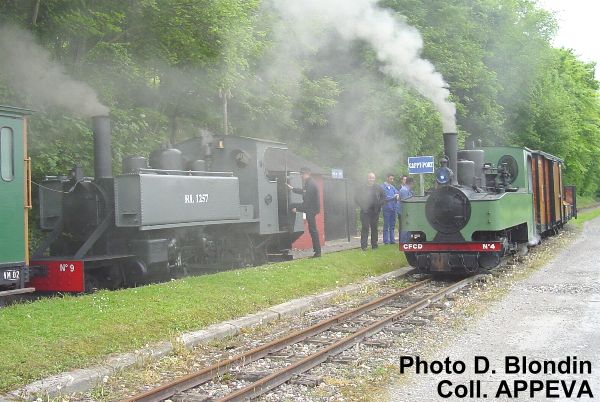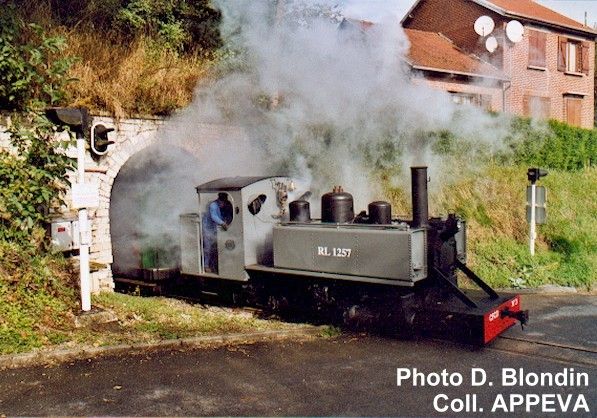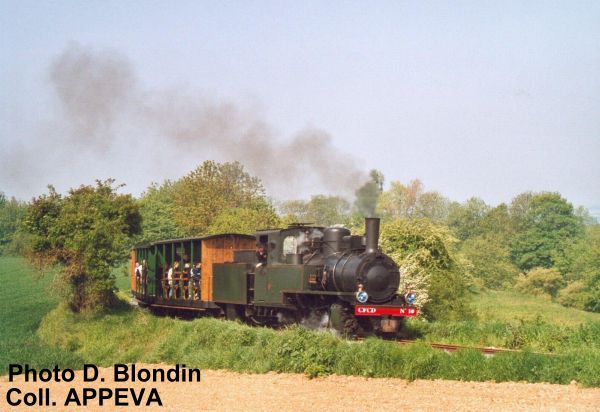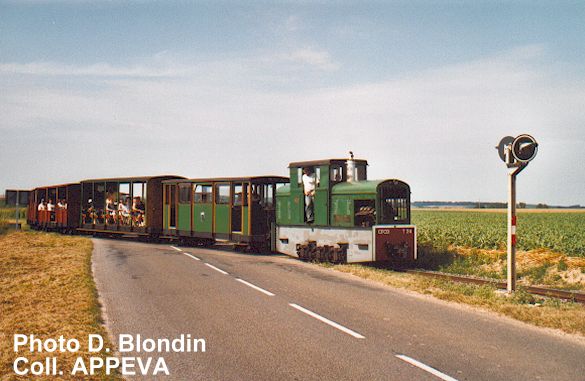Froissy is a hamlet with just some houses grouped together around two huge grain silos set up on both sides of the canal and its lock. The museum-station is set back from the road, just after the bridge. On the bridge, a sidewalk planted with grass, large of 3 meters, is the remaining platform of the metric department (French administrative division) railway "Albert - Montdidier".

The line, lightly curved, slopes gently down the Museum to the shed. The former museum, built in 1987 by the APPEVA volunteers and soon become too small, stands on the right hand just in front of the wooden workshop where steam locomotives, diesel engines and wagons are patiently restored and kept.
Then the line follows the towpath up to the little station of Cappy where ponds made from the old river Somme can be viewed. A footpath starting from Froissy leads up to a hill from where the splendid landscape of the valley can be discovered.

The train runs under a tunnel of trees to "port de Cappy": a little platform from where the sugar refinery shipped its sugar bags in the last years of the industrial use of the railway. The track was laid just along the canal side; wagons were unloaded directly into barges. The original track, laid too close to water and not adapted to tourist transportation, so was moved and a service premise used by the employees of the refinery, converted into a station. Two trains can pass each other at this place and exchange their locomotives; the rest of the journey is made by a diesel engine. The train then goes through a deep trench and then rushes into a curved tunnel more than 200 meters long!
The sugar refinery to avoid passing through the streets of Cappy built a tunnel in 1927. With no lights on the first 50 meters and the last 50, the tunnel is quite impressive for people not informed and is one of the most appreciated attractions of the site (especially when a steam locomotive is running!). The train goes out the tunnel onto a level crossing and continues on its way along the little farms and houses of the village of Cappy.

The train slopes up in a little wood where a metal bridge crosses a road, the bridge has been nicknamed "the viaduct" by the locals (the bridge is 6 meters long !). After the bridge, the track separates with a loop line near which the train stops. A few years ago, It was possible to notice the entrance of another tunnel, which joined a quarry; nowadays trees and vegetation hide it.
At this place, there are no more rails in front of the locomotive: the track seems to end here. After whistling, the train goes backwards. Most people think that it is a strange way to return but the train just slopes backwards for 500 meters onto another track, stops again and then continues to slope forwards.

People may be a bit lost with these manoeuvres. Nevertheless, things clear up when the whole zigzag system can be viewed. This track layout, very exceptional, is rare in Europe; this system is used in the Andes and the foothills of the Himalayas. The zigzag was built during WW1 to allow locomotives to climb a very strong slope. Thanks to this system, a steam engine was able to tow up two wagons of goods (around 20 tonnes). Then the line goes out vegetation, and slopes gently through corn, sugar beet and potato fields.

The train crosses a road; it is the end of the forward slope. There is a loop line on this side: the steam locomotives of the refinery were used to leaving two wagons here and going down the zigzag to Cappy Port to take another two. The train carries on the line along the road, you are on the plateau of the Santerre where you can see far off across the fields small villages' church steeples.

At the terminus of the line, near the village of Dompierre, the vestiges of the sugar refinery, closed in 1988, can be viewed.










